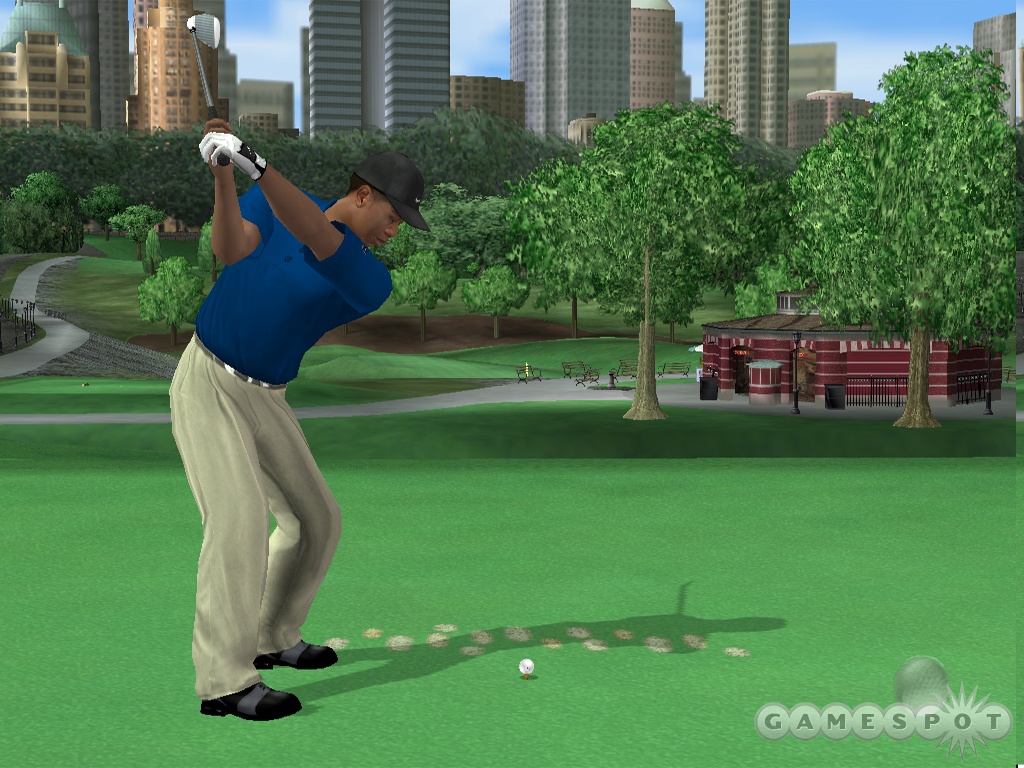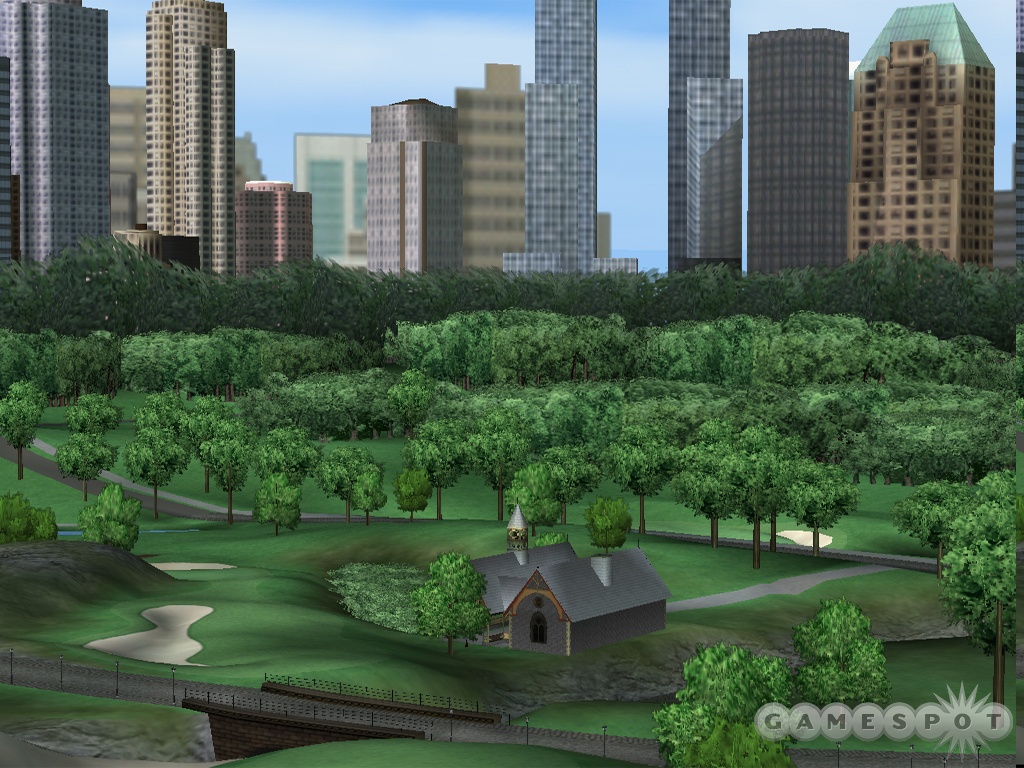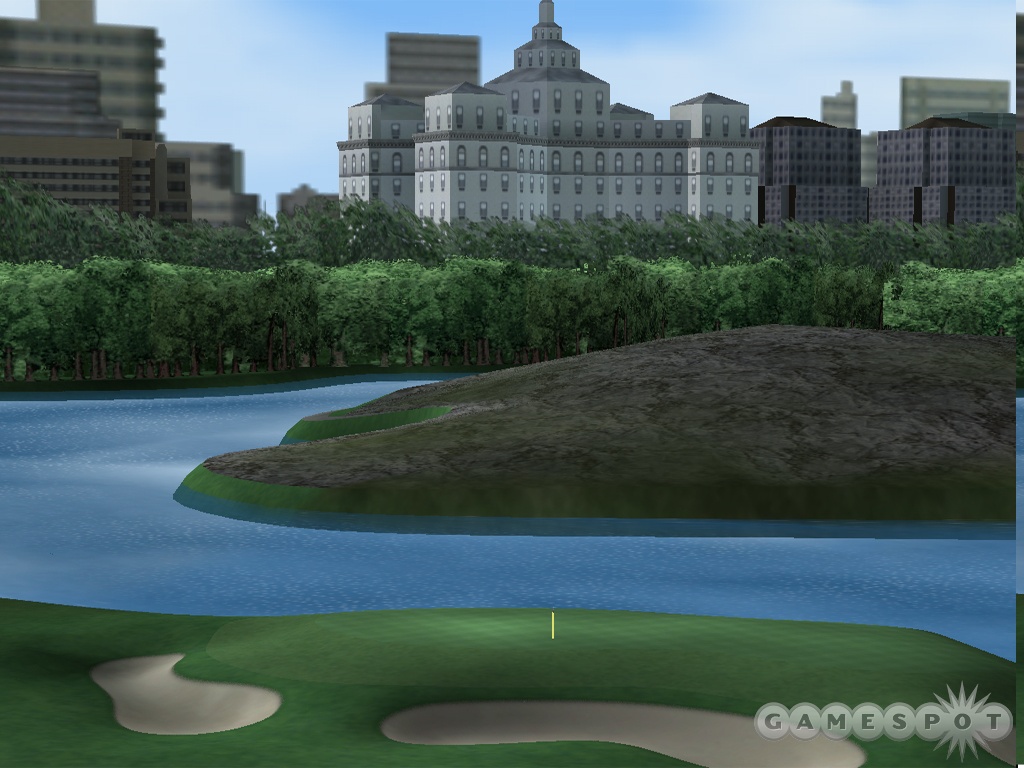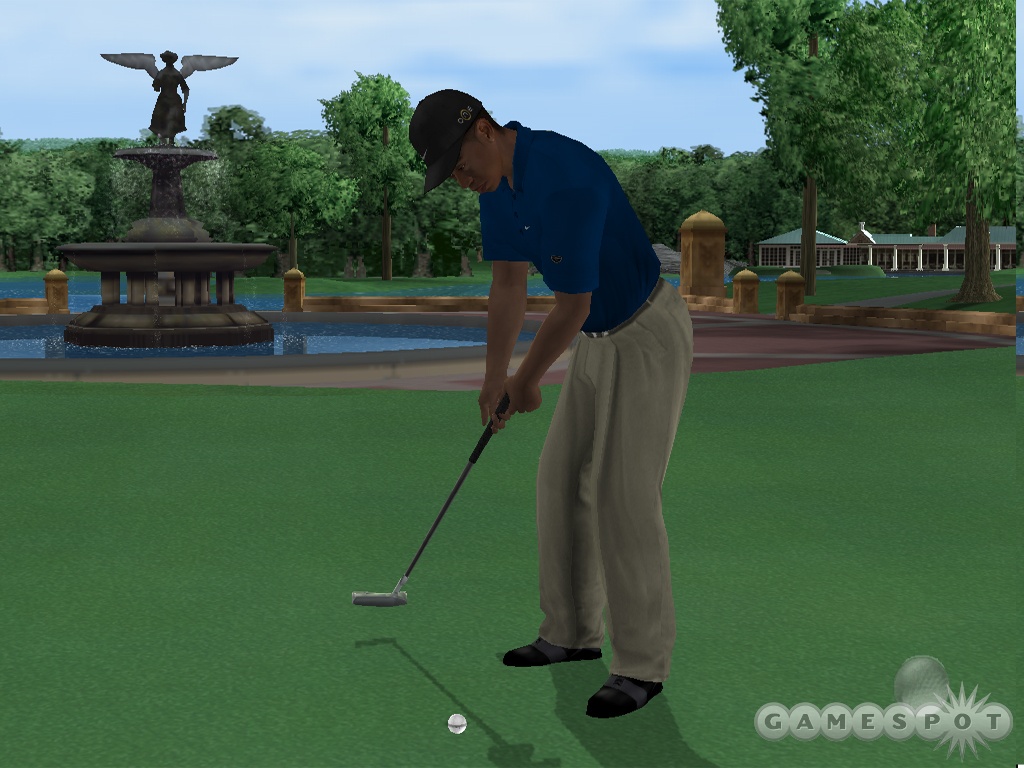Tiger Woods PGA Tour 06 Central Park Course Q&A
Tiger hits the Big Apple with the Central Park fantasy course. We talk course design with the game's associate producer.
Fantasy courses are nothing new for golf games. After all, as great as world-class courses such as Pebble Beach and Harbor Town are, there are times when you want to experience something a bit different--to go off the beaten path, so to speak, and take your golf game to a place that only exists in the minds of its creators. Often, these fictional courses are full of outlandish geography, near-impossible obstacles, and fantastical settings. And, while there may be nothing wrong with that style, there's something to be said for taking fictional course design and placing it in a setting we all recognize.

That's just what the EA Canada team has done with its Central Park fantasy course in Tiger Woods PGA Tour 06. We recently sat down with Tiger 06 associate producer DJ Powers, who designed the Central Park course from the ground up, to get his thoughts on course design and what makes one of the world's most famous public attractions such prime links real estate.
GameSpot: How does the Central Park course differ from fantasy courses found in previous Tiger Woods games?
DJ Powers: There are two major differences between Central Park and fantasy courses we have done in the past. The first being the location we've selected. In the past we have selected an area or a country and incorporated all of the unique things that area had to offer. The landscape of the golf course was completely left to our imagination, however. With Central Park, we used the real park setting. Every body of water is placed exactly where it belongs and the terrain is very close to real life. The other difference is in course design. I set out to design a course with real-world characteristics. The course is not tricked up, it's just challenging. Players will have to hit good shots on every hole or they'll find themselves in trouble right away. The greens are treacherous, which means it's important for the player to always be on the correct side of the hole, or big numbers await.
GS: What is it about the Central Park setting that attracted you?
DP: Central Park is an idea that had been passed around on the team for a couple of years. When I was given the opportunity to design a course, I chose Central Park because it was an exciting and challenging idea. Central Park is so well known and beloved by not just the population of New York, but also by the millions of visitors as well. I knew it would be fun to design a course that so many people could identify with.
GS: For those who aren't familiar with the park's geography, can you give us an idea of the size of real estate we're talking about? Does it feature the kind of undulations and differing surface types that make traditional courses so challenging?

DP: I spent two full days covering the park, and that is nowhere near enough time to see everything. The park is big enough to hold two or three real golf courses. If you just walked the perimeter of the park it would seem relatively flat, but like many great courses, it is the subtle undulation that is the most effective. Once inside the park you begin to notice that the terrain rolls up and down throughout the park, just like a golf course. The bodies of water also make it a perfect site--there are six or seven lakes that the course winds its way through.
We (Heart) NY
GS: Was there any aspect of the park's geography that made it especially challenging from a design standpoint?DP: If you've been to Central Park, you know that there is a lot going on inside the park (statues, restaurants, carousels, museums, gardens, lakes, etc.) It was challenging to imagine a golf course weaving its way through all of these things and to make it fit. We were forced to be very creative when laying out our holes, so that we could keep the park intact.

GS: Take us through the process of designing the course. How much and what kind of prep work was involved? How did you go about taking your concepts to your art team and getting the design finalized? How long did the entire design process take?
DP: I spent a couple of weeks leading up to my New York trip reading about the park. We bought some beautiful books that laid out the park's amazing features in great detail. I then went to the park and spent two days with a notebook, a pen, and a camera. I toured the park and drew out as many holes as I could imagine. Some of the holes were just obvious. The way a hill sat behind a lake, for instance, made it a perfect setting for a par 3. Some holes I had to work a little harder to create. Once I got home I laid out the entire 18 holes from tee to green on a large map of the park. We then sent the artist, Ian House, who would be responsible for the course, to New York. He spent a week inside the park photographing each hole and all of the intricate details involved in that area of the park. The team liked my ideas of the initial 18 holes I had planned out, so when Ian came back from New York we got to work. The entire process took about eight months to complete. After the initial design was constructed, the art team had to build the terrain and the city buildings surrounding the course. It was a long process, but well worth the wait.
GS: Did you study the works of any other course designers, such as Eddie Hackett or Robert Trent Jones, when brainstorming your design?
DP: I grew up in Santa Cruz, California, and I was lucky enough to work at Pasatiempo GC through high school and college. Alastair Mackenzie, who designed Pasatiempo, also designed amazing courses like Augusta National and Cypress Point. Mr. Mackenzie has always been my favorite designer, mostly because of the creativity he puts into his greens. I tried to use the same creativity when building the greens for Central Park.
GS: Will we see familiar landmarks as we play the fictional Central Park course?
DP: We included as many landmarks as we possibly could when creating Central Park. Users familiar with the park will recognize that every body of water is included. We were also able to add the carousel, the boathouse, the Bow Bridge, the Dairy, and the Ice Cream Café. You'll play along the Literary Walk and the Bethesda Terrace. The 18th hole is a spectacular par 5 that plays through the Great Lawn and finishes in front of the Belvedere Castle.
GS: Do you have a favorite hole in your fictional creation?
DP: I wouldn't say that I have a favorite hole, but my favorite section of the park is the area around the lake, which includes the boathouse, the Bethesda Terrace and the Bow Bridge. I was able to create a few holes that weave their way through this area and they are spectacular. I think those holes are my favorite on the course.

GS: Is this the start of a trend for the Tiger series? Could we see a Golden Gate Park or Boston Common course one day?
DP: We're evaluating our options right now for the next fantasy design, and other famous parks are definitely on the list. The plan is not to tour the world turning parks into golf courses though, we always strive to be creative and come up with new and exciting ideas. Stay tuned.
GS: Thanks for your time, DJ.
Got a news tip or want to contact us directly? Email news@gamespot.com
Join the conversation